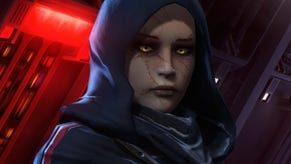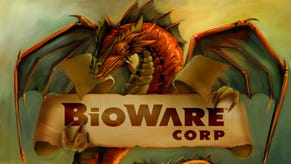Star Wars: The Old Republic
Leia upon Leia.
You can't vote for yourself – BioWare knows its audience well – but for every team-mate commendation you receive, your rewards are increased accordingly. It encourages you to play to your role: to provide that life-saving heal, or indeed to pay back the healer who brought you back from the brink of death with a well-timed taunt.
The game will utilise a Valour system for PVP progression with a level cap of 50. Success on the battlefield is rewarded with tokens used to purchase various ranks of PVP gear as you level up. A built-in achievement system will also bolster your token rewards so, for example, if you defend for 10,000 damage without dying, you'll receive a bonus in recognition at the end of the battle.
With the caution that defines any occasion where a roomful of people get their first experience of a PVP system, the combat is at first timid but grows bolder as people familiarise themselves with the combat options. There's nothing revolutionary in the combat style for anyone familiar with MMOs, but the action and Warzone design are polished.
As civil war rages on Alderaan, both factions are fighting to achieve influence in the area. At the beginning of each match – and following death – players spawn inside a dropship high above the battlefield before being whizzed into the action on a speeder-bike. Once on land, both teams battle to control a spread of turrets which fire upon the opposing team's dropship. Once a ship is destroyed, the round ends.
While taunt mechanics rarely come into effect in MMO PVP environments, players will be be able to use a revised form in battle. Rather than forcing a target to attack the taunter, the system will instead effectively debuff the enemy, increasing their damage taken for example, or reducing their defences.
The diminishing returns effect, critical to all player-versus-player combat, is now visible to players rather than being an unknowable, hidden percentage to be feared. As you suffer crowd-control effects your Resolve bar fills; once full, the player is immune until it recedes.
While BioWare is not yet talking Warzone numbers, we are promised that it's not sitting idly by preparing the bare minimum while the competition soldiers on. Both PVP and PVE servers will certainly be available at launch and every server type will also feature purely PVP zones – again, details on these remain under lock and key.
To wrap up, we're given a fleeting look at the space combat. While the action is epic in its rendering, BioWare is careful to manage expectations; this section of the game will remain as a purely single-player, arcade experience. It's more time-filler between meatier group activities than a system of progression in its own right.
But the first time you see your ship approach the sprawling thousands of asteroids that form a planetary ring system, then dart and twist through a maze of collisions towards the enemy fighters? Well, you'll have to see it for yourself to appreciate the impact, and if you have even a passing interest in Star Wars, you'll be right do so on launch day.
Once again, we've been treated to an awfully generous slice of this long-awaited online world. But inevitably, and with so much potential on show, we find ourselves asking the nagging question that lingers after every preview of The Old Republic. Where exactly is the long-term MMO in this most epic – and infamously costly – of MMOs?
Each glimpse of The Old Republic raises as many questions as it answers, and the knowing smile that greets any enquiry about the endgame is starting to wear a little thin for players and press alike. With only a little over six months until the game's proposed November release, it's an area of the game that Bioware needs to start talking about. While the signs are looking good for The Old Republic's release, its long term prospects have yet to be given the same air of confidence.








